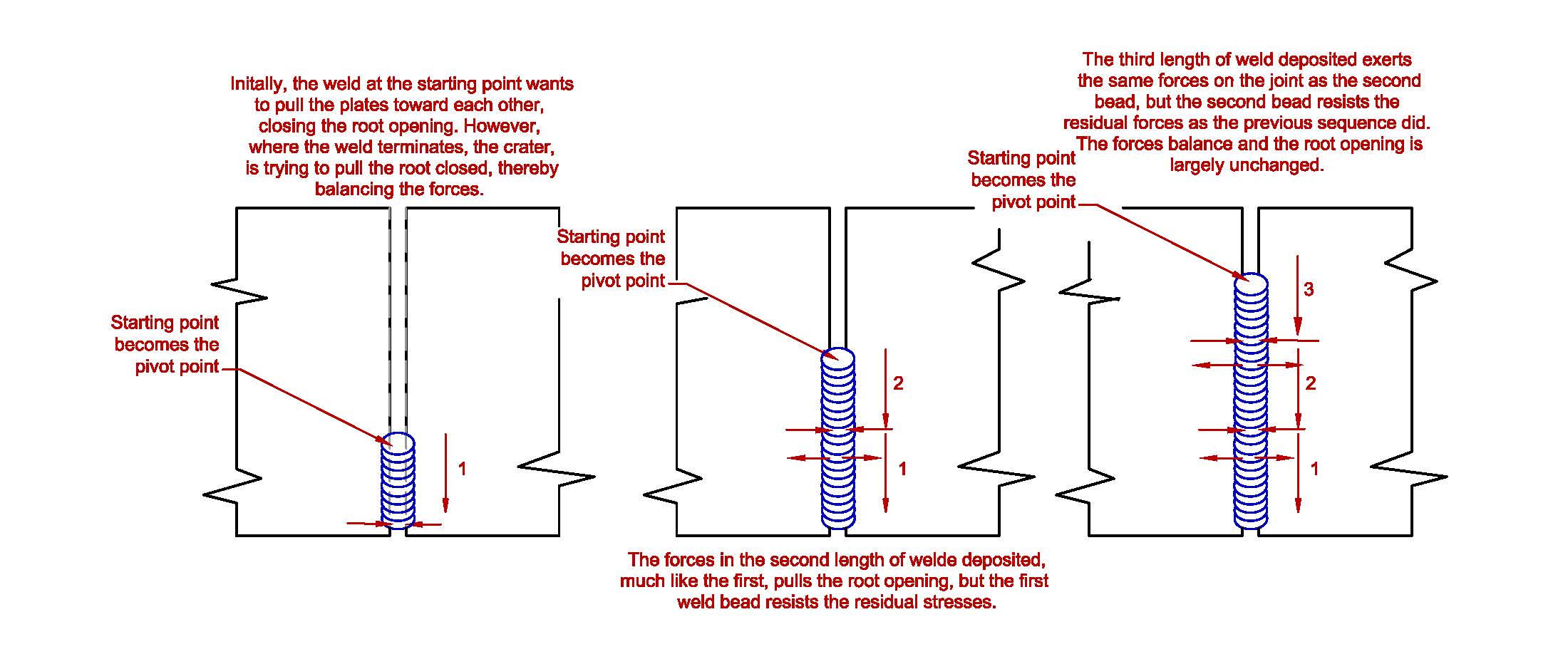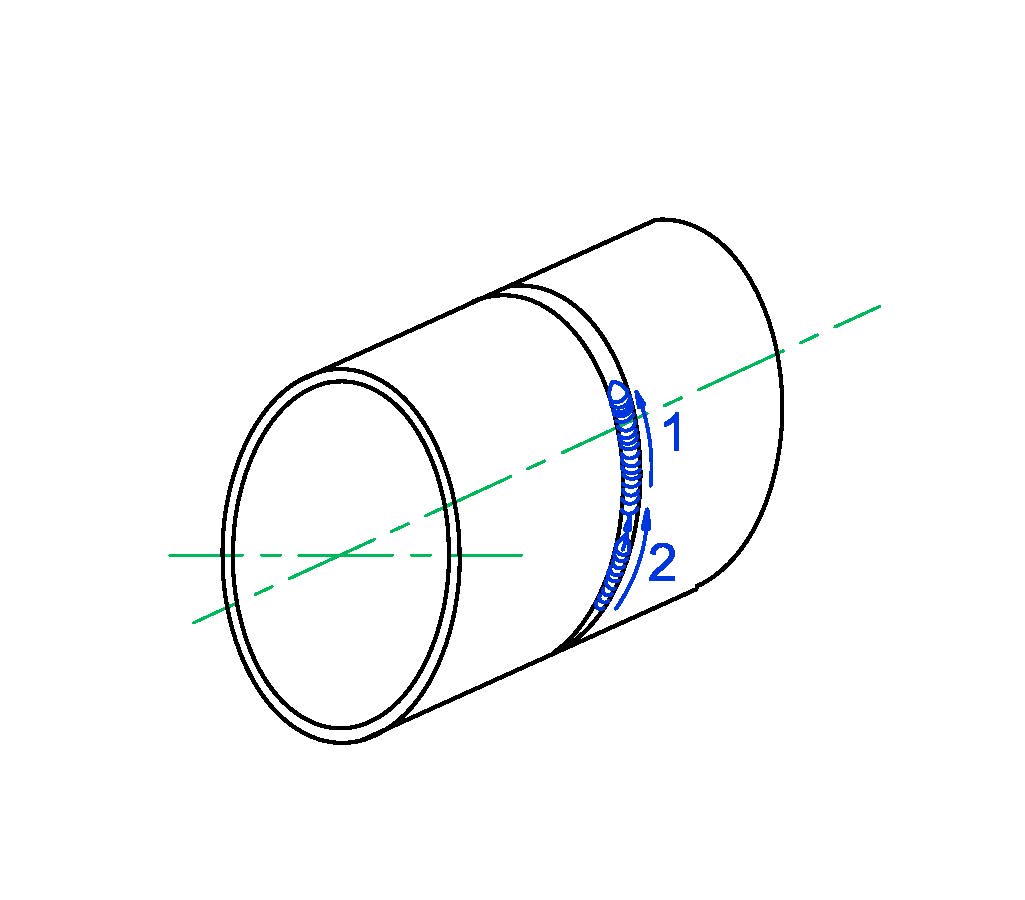Hello Kent;
I'm going to have to answer this in two separate responses. I have to pack so I can catch a train back to New England. However, I started and so here is the first half of the response.
As indicated by the sketch, the location of the beginning of the weld serves as a pivot point of the plate displacement resulting from the residual stresses. I am ignoring the longitudinal stress, I am simply considering transverse residual stress since it is responsible for the displacement of concern.
As the weld progresses toward the far end of the joint, transverse residual stresses, acting like a spring in tension, pulls the edges of the plates toward the weld centerline. Again, simplifying the theory to make it easier to show, the stress caused by the weld cooling and contracting, the residual stress is on the same order of magnitude as the yield strength of the base metal and the weld. If this was A36, the R.S would be 36 000 pounds per square inch. If a higher strength low alloy steel was being weld, the RS would be equal to the YS of the base metal, 50 ksi, 70 ksi, etc. It all depends on the strength of the base metal being welded.
From the magnitude of the residual stress, you can see that it is nearly impossible to resist the forces of the residual stress without taking extreme measures, i.e., strong backs, etc. The longer the weld, the greater the problem of distortion.
My example is considering a groove weld consisting of a single pass weld. The distortion is at its worst while making the root bead. Once the root bead is in place, it offers resistance to the forces pulling the plates toward the weld centerline, but there is still residual forces at work and the effects are additive for every weld bead and weld layer deposited in the groove. The effects diminish because each weld layer offers more and more resistance to the tensile forces introduced by each new weld layer. To simplify; the root bead might result in 1/8 inch displacement over the length of the joint, the second layer might result in 1/16 inch displacement, the third layer 1/32 inch, and so on.
We are ignoring the residual stresses in the longitudinal direction for this discussion, but as you know, the residual forces in the longitudinal direction cause the ends of the plates, at opposite ends of the groove weld to pull upward. The transverse residual stresses (which we are talking about) pull the side plate upward as well. The bottom line is that the sum effects of residual stresses are complex and affect the part geometry in all direction. Considering the transverse stress and longitudinal stresses makes it a little easier to understand.
The crazy part is that the base metal only needs to attain a delta "T" (temperature difference) of about 220 degrees to reach the yield point of the steel and induce permanent distortion. We use the principle whenever we use heat to camber a beam or to flame straighten a member that has excessive distortion. My point is that we do not have to heat the steel to a high temperature to see the results of the residual stresses when cambering or heat straightening. I usually use about 800 degrees F as the maximum temperature to ensure no metallurgical damage results from the operation.
I'll get back to this thread after lunch. It is time to pack and head out to the train station.
Best regards - Al





 More questions...
More questions...  Okay let's have some discussion about this technicality.
Okay let's have some discussion about this technicality.




















